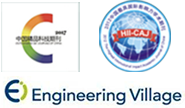Abstract:
With the increasing emphasis on environmental protection and green chemistry, traditional adhesives are gradually being phased out of the market. Ionic gel adhesives, as a new type of bonding material, have become the focus of researchers' attention. This article reviews the preparation methods of ionic gel adhesives, categorizing them mainly based on the ways in which polymers and ionic liquids form ionic gels, including direct mixing, solvent exchange, and in-situ polymerization. Furthermore, the article summarizes the adhesive properties of ionic gel adhesives, noting that the maximum bonding strength can reach 7.2 MPa on different substrates, along with their ionic conductivity, mechanical properties (with tensile strength up to 14.3 MPa and elongation at break reaching
5000%), biocompatibility, self-healing ability (rapid healing within 10 min at room temperature), and transparency. Additionally, it highlights the structural design of multifunctional adhesives based on self-healing, biocompatibility, self-adhesion, temperature sensitivity, and conductivity, as well as their roles in applications such as solid-state electrolytes, flexible electronics, biomedicine, smart wearable devices, and optical devices. This provides a reference for the development and application of more diversified properties of ionic gel adhesives.


 下载:
下载: